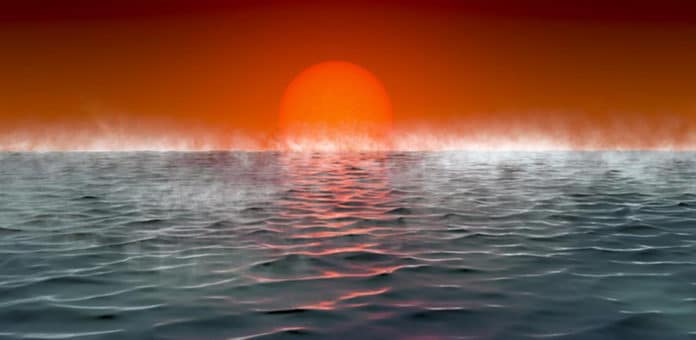While looking for habitable planets, astronomers often look for planets of similar size, mass, temperature, and atmospheric composition to Earth. Be that as it may, astronomers at the University of Cambridge believe there are more promising prospects.
Now, astronomers have identified a new class of exoplanet dubbed ‘Hycean’ planets. These Hycean planets are very different from the Earth but could support life- which could significantly accelerate the search for extraterrestrial life outside our Solar System.
The Hycean planets are hot, ocean-covered planets with hydrogen-rich atmospheres. Compared to Earth, these planets allow for a far wider habitable zone or ‘Goldilocks zone. This means that they could still support life even though they lie outside the range where a planet similar to Earth would need to be habitable.
According to scientists, the results could mean that finding biosignatures of life outside our Solar System within the next two or three years is a real possibility.
Dr. Nikku Madhusudhan from Cambridge’s Institute of Astronomy, who led the research, said, “Hycean planets open a whole new avenue in our search for life elsewhere.”
Ocean planets can be up to 2.6 times bigger than Earth. They have atmospheric temperatures up to almost 200 degrees Celsius. However, their oceanic conditions could be like those helpful for microbial life in Earth’s oceans. Such planets also have tidally locked ‘dark’ Hycean worlds that might have habitable conditions only on their permanent night sides and ‘cold’ Hycean worlds that receive little radiation from their stars.
Planets of this size dominate the known exoplanet populace. Also, scientists haven’t studied them in much detail as super-Earths. However, size alone is not enough to confirm whether a planet is Hycean: other aspects such as mass, temperature, and atmospheric properties are required for confirmation.
While determining the conditions are like on a planet many light-years away, astronomers first need to check whether the planet lies in its star’s habitable zone. They then need to look for molecular signatures to infer the planet’s atmospheric and internal structure. Astronomers also need to check other biosignatures that explain the planet’s habitability.
Madhusudhan said, “Essentially, when we’ve been looking for these various molecular signatures, we have been focusing on planets similar to Earth, which is a good place to start. But we think Hycean planets offer a better chance of finding several trace biosignatures.”
Co-author Anjali Piette, also from Cambridge, said, “It’s exciting that habitable conditions could exist on planets so different from Earth.”
Astronomers found that several terrestrial biomarkers in Hycean atmospheres would be readily detectable with spectroscopic observations in the near future.
The Cambridge team identified a sizeable sample of potential Hycean worlds. The samples are prime candidates for detailed study with next-generation telescopes, such as the James Webb Space Telescope (JWST).
Madhusudhan said, “A biosignature detection would transform our understanding of life in the universe. We need to be open about where we expect to find life and what form that life could take, as nature continues to surprise us in often unimaginable ways.”
Journal Reference:
- Nikku Madhusudhan et al. Habitability and Biosignatures of Hycean Worlds, Astrophysical Journal (2021). DOI: 10.3847/1538-4357/abfd9c
